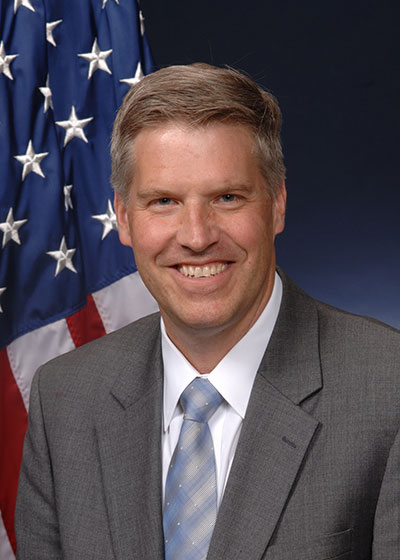2014 CEOs Who 'Get It'
The National Safety Council recognizes 10 leaders who demonstrate a personal commitment to worker safety and health

 |
 |
Patrick Gallagher
Under Secretary of Commerce for Standards and Technology and NIST Director
The National Institute of Standards and Technology
 |
Accomplishments
|
Why is safety a core value at your organization?
Safety is a core value because our mission is enabled by the talent and hard work of our employees and associates. There is no better way to repay their service than to do everything we can to ensure that they don’t get hurt doing their jobs.
Describe your journey to becoming a CEO who understands the importance of worker safety.
My journey began by working in a safety-conscious, regulated environment – a reactor-based program doing materials science. Certainly, early on it was about avoiding accidents. Later, my thinking evolved in many ways. Safety management is about much more than avoiding accidents. It is an approach to work that is thoughtful, seeks to constantly improve and ultimately has much broader impacts. Safety also is powerful because it engages everyone in the organization. You can’t outsource it. It has to belong to and be driven by everyone: the leaders, the staff, our collaborators, even our visitors. As a result, a safe organization tends to be a well-run organization. That is not an accident.
What is the biggest obstacle to safety at your organization, and how do you work to overcome it?
I think our biggest challenge is focus. There is simply a lot to do to build a safety culture. We had to educate ourselves; rebuild our safety management programs; reinforce behaviors; and learn how to measure, how to improve and how to collaborate. At times, it felt like the task was too big to tackle. It was important to strike the right balance between creating a sense of urgency and allowing the organization to learn and grow. The most helpful realization is that this is about a long journey, not a sprint. That helps because you can focus on new skills and new activities and know that they will be the building blocks for other improvements to come.
How do you instill a sense of safety in employees on an ongoing basis?
We think of safety as how we perform our mission work (“safety as an adverb”). At NIST, we really enjoy our mission. For many, it is a passion and a privilege to work at a place like this. By making safety about the way we do our work, and not an “add on,” it becomes much easier to keep that focus. One of our strong values at NIST is excellence – not surprising for a precision measurement science agency. Safety fits well in that value. It’s part of our ethos: We do things right.
How does your organization measure safety? What are the leading indicators that show you how safe your organization is, and where do you see room for improvement?
This has been one part of the journey that, frankly, we struggle with constantly. Obviously, there are the standard outcome and incident measures like OSHA recordables. We use these, and they play an important role because they are used so broadly. But they don’t really tell you enough about what’s happening and how you can improve. Those are the precious metrics. Therefore, we work hard to assess attitudes and behaviors. We monitor how well our safety management system works. We have worked very hard to learn from every incident or near miss. We try to get managers to “manage by walking around” and use their observations.
I think that any continual improvement process like safety depends on good measures, and, equally, can be driven off the right track with poor measures. Perhaps this is in our blood: we are after all a measurement agency! I don’t know that we will ever be completely satisfied with how we measure safety. We do believe that if you can’t measure it, you probably can’t manage it – so this is a core part of our improvement journey.
As a non-regulatory agency of the U.S. Department of Commerce, NIST promotes U.S. innovation and industrial competitiveness by advancing measurement science, standards and technology in ways that enhance economic security and improve our quality of life. NIST has about 3,000 staff members and hosts about 2,700 associates from academia, industry and other government agencies.

